Like most sites, this site uses cookies to make it work. By continuing to use the site you accept our cookie policy . You won’t be shown this message again :)
You are using a browser that does not support javascript. Some aspects of this site may not work as intended.
We've got 11,000+ bikes in the comparison database. Find another?
- Speed Concept 9 Series

Trek Speed Concept 9 Series 2012
Prove Humanity: Please click here to start .
Measurements are in millimeters and degrees.
- Bike name and year
- Geometry table
- Add an image
Problem? Flag for Review or
If you like the site, can we ask a favour?
Click now, buy soon, and we'll get a few pennies.
Chain Reaction Cycles - Wiggle - Rose
Thank you! Bob & Dave
Also! Search by Stack and Reach
You can now search the database by numbers .
Find bikes that match your geometry criteria.
- Trek Speed Concept 9.9 2012
158cm - 171cm
168cm - 180cm
178cm - 189cm
186cm - 199cm
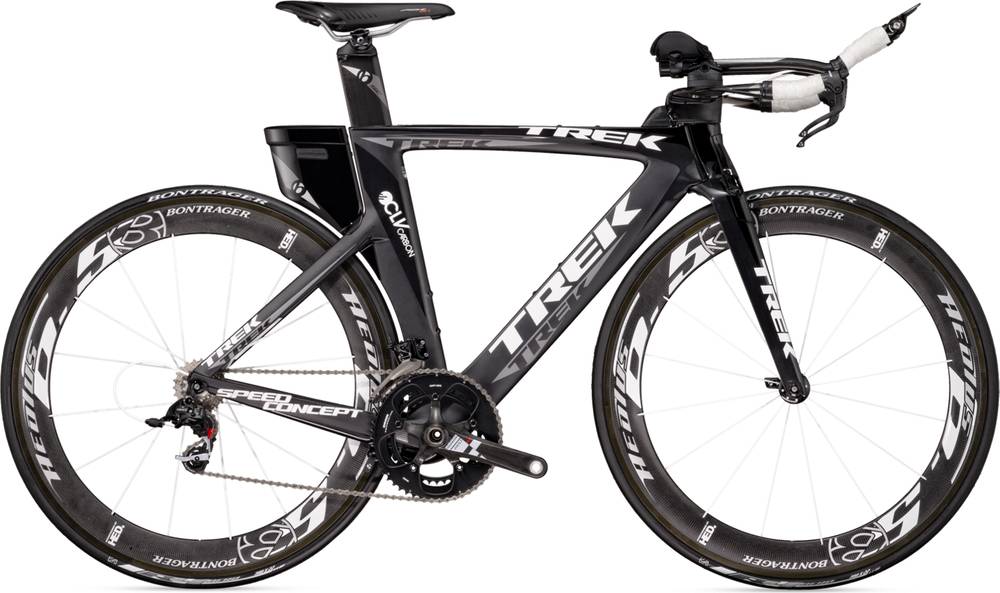
Bike summary
Bike components.
600 Series OCLV Carbon, KVF (Kammtail Virtual Foil) tube design, SC Speed Box & DuoTrap compatible, includes SC Draft Box
Suspension Fork
Bontrager SC, 600 Series OCLV Carbon, KVF leg design, integrated brake & stem
Rear Derailleur
Front derailleur.
SRAM Red, braze-on
Shift Levers
SRAM Red R2C, bar end control, 10 speed
SRAM OG-1090 11-23, 10 speed
SRAM Red, 53/39 (double)
Bontrager Aeolus 6.5, carbon
Bontrager R4 Aero, 700x22c
Bontrager Speed Concept integrated brakes w/Bontrager Race XXX Lite aero levers, integrated cable adjuster
Bontrager Speed Concept, direct mount
Bontrager Speed Concept aero bar w/ski bend extension, carbon, direct mount
Integrated, sealed bearings
Fizik Airone Tri2, manganese rails
Bontrager Speed Concept Race X Lite, carbon, +/-10mm offset
Bike geometry
Model overview.
Speed Concept 9.9 belongs to the Trek Speed model. 112 bikes variations carry this model name so far. Take a sneak peek at all Trek Speed bikes models from 2012 , by clicking here .
Make sure you wear a helmet on every ride, and that your bike performs well. In short, this means checking the tires, brakes, and chain to make sure everything is in good working order.
Average price for Triathlon bikes
According to our math, the average price for a trustworthy Triathlon bike is 4177 $ . However, you could also get a good Triathlon bike even if you pay a lower amount than the average price. In short, before purchasing your ideal bike do some research about its components, and also check for reviews online.
Speed Concept 9.9 components
Fork material.
The fork is made out of carbon, so, it’s a great addition to the bike’s value. However, carbon forks should be regularly inspected for damage because even the smallest crack could cause the fork to fall apart.
When leaving the production line, the Speed Concept 9.9 model has 700c carbon wheels. There is no doubt, that 700c wheels are very popular on all road bike models. However, these wheels don’t perform so well when passing over obstacles.
We ride faster and faster, so a good braking system is essential on a bike nowadays. The Speed Concept 9.9 comes with Rim brakes. Rim brakes are cheaper than hydraulic brakes, and also easier to maintain. However, they are not nearly as effective as hydraulic brakes are.
Speed Concept 9.9 comes in 4 sizes , that range from 158 cm – 199 cm (5.18 ft – 6.53 ft) . In short, you can easily find one that suits you.
Trek Speed models from 2024
Trek speed models from 2023, trek speed models from 2022, trek speed models from 2021, trek speed models from 2020, trek speed models from 2019, trek speed models from 2018, trek speed models from 2017, trek speed models from 2016, trek speed models from 2015, trek speed models from 2014, trek speed models from 2013, trek speed models from 2012, trek speed models from 2011, trek speed models from 2010.
Not sure what's your riding style?
Find your ideal bike in seconds!
Take our 30 seconds quizz and find out which bikes suit you the best.
Handy tools
Tools to help you even more.
- MAGAZINE OFFERS
- BIKE INSURANCE
- Best Products
- Maintenance
- Accessories
- Long-Term Reviews
- BikeRadar Podcast
- First Look Friday
- Bike of the Week
- Tech Features
- Routes and Rides
- Bike Galleries
- BikeRadar Bargains
- Buyer's Guides
- Fitness & Training
- Sizing & Fit
- Mountain Biking UK
- Cycling Plus
Trek Speed Concept 2.5 review
Latest aerodynamic science at an affordable price
Joby Sessions
Guy Kesteven
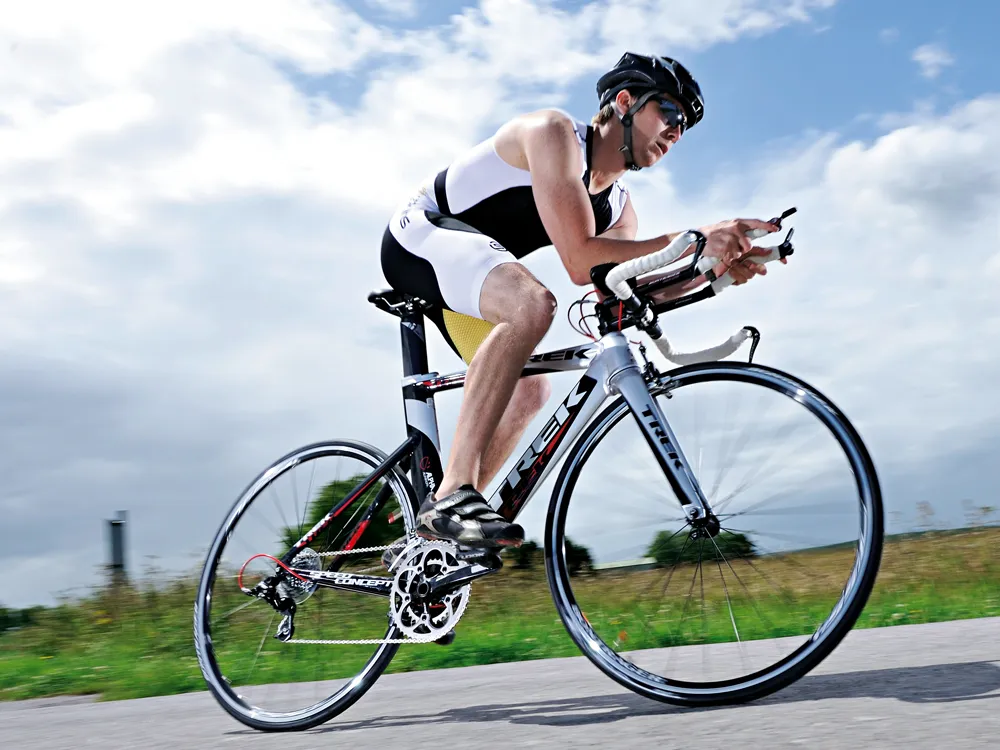
Trek’s Speed Concept 2.5 gets the same aggressive position and chopped teardrop profiling as the carbon 7-series bikes. The overall ride is more heavy metal than an Aerosmith chart-topper though.
The Speed Concept looks amazing, with all sorts of tricks to cheat wind and attract buyers, while the alloy frame’s weight is impressively close to the carbon version’s. But it’s still heavy in comparative terms and although the aero effect is obvious at higher speeds, fit, handling and overall responsiveness issues meant our test team rarely experienced the benefits.
Ride & handling: Low acceleration and responsiveness
While Trek have clearly spent a vast amount of time in the wind tunnel and on the drawing board to chase drag out of every part of the bike, the war on wind seems to have been waged at the expense of friendly rider interaction and easy ergonomics. In other words, while there might be the option to extend the seat tube aerodynamics and store your mid-ride munchies in a more aero manner, all our testers, apart from a couple of die-hard drag queens, found the fit of the Speed Concept uncomfortable and restrictive, even after spending time tweaking the contact points.
The narrow shoulder and arm position caused by the narrow-span bar and extensions was an obvious problem for some broader-shouldered riders. Several riders also complained of reflux when trying to rev the bike, which was hard even in the tallest position possible. Issues like cable contact between the knees, the bulky tension screw adjusters looping out from behind the stem, and even rattling internal cables got on riders’ nerves.
While the handling in the tuck was sure-footed and stable for those who eventually got comfy, it’s positively frightening if you lift out of the saddle to inject speed out of a corner or up a climb. And although power transfer from the big frame tubes is reasonable, high bike weight – particularly the wheels – also meant low acceleration and responsiveness in general.
Combine this with the soft braking and you’ve got a bike with a cruiser rather than combative feel – as evidenced on group rides where the Trek struggled to keep the other bikes in sight. On the bright side it’s not as jarring as we feared from such a slab-sided alloy frame. You’ll need to keep an eye out for any significant potholes or rough patches though, otherwise you’ll be punished through your palms and shorts pad.
Frame: Kammtail aerodynamics and integrated storage
The aggressively deep maintubes and the tapered headtube (all coated in sparkling metallic paint) are certainly striking, and the Kammtail Virtual Foil (KVF) aerodynamics are something of a talking point too. The tubes’ blunt, flat backsides are designed to create flexible vortices trails and a smoother overall airflow in crosswinds than a full teardrop.
Anti-drag detailing is equally comprehensive. Internal brake and gear cable routing disappears vertically behind the stem. The extended fork top and downtube dovetail via a right-angled notch. The carbon aero seat mast is clamped with a wedge system that’s flush with the tapered horizontal top tube. While it’s not the complex, custom-faired in-brake of the carbon bikes, the rear U-brake is mounted under the chainstays behind the cranks in already ‘dirty’ air.
The frame is also drilled and pocketed to take Trek’s aero Speed Box top tube and Draft Box seat tube storage systems, as well as Speed Trap direct-mounted computer sensors. It’s not smooth-welded, but the Alpha Red aluminium is extensively shaped, which means this is actually a lighter frame than its carbon sibling if you include the integrated rear brake. It’s still heavy compared to most bikes though, especially if you include the amount of outer cable rattling round inside the frame.
Equipment: High weight and poor braking
Complete bike mass is relatively high too, and the Bontrager wheelset is the weightiest on test, which dulls acceleration. The SRAM Apex kit works smoothly though, and while we’d normally grumble about smaller compact chainset rings on a dedicated aero bike, when it’s designed for the entry-level market like this one, it’s much less of an issue. The Bontrager cockpit gives plenty of potential for adjustment too, although pad angle is crucial for a secure-feeling fit.
While the chrome-effect Trek brake levers are particularly neat and pretty, convoluted internal cable routing also makes braking feel mushy. The fat-nosed Vision saddle is also very much in the mushy mould, which was appreciated by some, although others found the breadth between their legs too much for comfort.
Share this article

- Terms & Conditions
- Subscribe to our magazines
- Manage preferences
- Running Footwear
- Cycling Footwear
- Electronics
- Things that Roll
- Running Stores
- Fitter's Database
- Triathlon Clubs
- Race Calendar
- Map of Everything
- Your Local Listings
- General Training
- General Physiology
- Equipment and tools
- Geometry & Handling
- Choosing via Stack/Reach
- Road Bike Fit
- F.I.S.T. Workshops
- F.I.S.T. Tri Bike System
- STEM Calculator
- Bar to HT Calculator
- TRI Geometry Calculator
- Stack/Reach Database
- Fitter's Forum
Most Popular
Map of everything.


Speed Concept (2010) Geometry

Ask anyone in the upper echelons at Trek, they’ll tell you that no project, whether in road, MTB, or any cycling category, sat above the Speed Concept. This was Trek’s clear priority for 2010, and as of this writing a visit to Trek’s online home yields a full-page pic of the Speed Concept. Isn’t it amazing that a tri bike was the top project of a company with an annual revenue (estimated several years ago by the New York Times and Inc. Magazine) north of $600 million? Note the description of the Speed Concept as a tri bike . Not a TT bike built for a pro tour team, retasked for triathlon. No, this is a tri bike built for Chris Lieto, Julie Dibens, and you, and which is retasked for use by Lance and Levi. But don’t worry too much for the boys who ride for The Shack. In point of fact, the distance between tri and TT is closing fast, and, all that distance has been traveled by the pro bke racers. It was tri geometry they should have been riding all along, we now know. And that’s what the Speed Concept is. Trek is not the first pro tour team sponsor to built its pro tour TT bike as a tri bike first and a TT bike second. Cervelo proved it could be done, and, in subseqent years it’s become clear that this is not only one possible way to accommodate both tri and TT needs, it’s the preferable way. Further, it’s preferable not only to triathletes, but to the road riders who ride these tri bikes. Finally, Trek has capitulated to Cervelo’s narrative: there is little to no space between TT and and tri, and, the triathletes were geometrically right all along. One thing about Trek: It is a proud company, but not an arrogant one. Whether in monocoque frames, full suspension mountain bikes, or tri bikes, it may take a false start or two; it may take two years, or three, to get it right; but, it will get it right. That is to say, it’ll get the product right, even if it needs to implicitly admit, through its industrial design, that another brand’s prior themes were worth borrowing in order to achieve success.

Geometrically, the Speed Concept plays it right down the middle. This bike started with stack and reach as design inputs, that is, the top tube lengths, front/center, and other metrics were largely resultant from frame length and height imperatives that Trek mandated. The attached graphic, borrowed from Trek’s Speed Concept White Paper, in turn borrows from our recent style of demonstrating geometric trends among bike brands (and we have no problem with that). That graphic demonstrates the care Trek has taken to thread the geometric needle throughout its size run, and, an attachment to even increments between sizes. This is new for Trek, at least in the grading of its tri bike sizes. But the frame is not the end of the story. Riders fit aboard bikes, and these are constructs of frame + the stem/aerobar complex. Geometrically, how does the Speed Concept fare as a complete bike? Trek’s done a good job of creating a superbike with true adjustability. This, if your definition of superbike is a modern aero frame that integrates the aerobar, fork and frame at the expense of a traditional stem and headset spacers. Trek did what Giant, with its Trinity Advanced, failed to do: It waited to release its bike until stems in various lengths were ready to be sold alongside the bike. Trek offers six stem configs, although “stem” doesn’t accurately describe what might be better considered protruberances of the frame. These are the stem offerings at least for the 9 Series (the higher end OCLV) as follows: Low/Near: 10mm rise, 50mm reach Low/Far: 10mm rise, 100mm reach Mid/Near: 45mm rise, 60mm reach Mid/Far: 45mm, 100mm reach Tall/Near: 75mm rise, 80mm reach Tall/Far: 75mm rise, 110mm reach

Makers of these new superbikes seem to have an easier time giving their bikes height adjustability than offering a lot of length options. The Giant Trinity Advanced gives you no stem length options other than what comes on the bike. At least the Speed Concept gives you two (per height option). If you like low profile aerobars, like I do, then you'll probably want to choose between the low/near and low/far stem options. This also because the Bontrager bars are rather high profile in the way the armrests mount above the pursuit bar. Will the 100mm work for me? Maybe, I don't know yet. But that's not the end of the adjustability. The Bontrager aerobars mount the pads on the extensions, so, by moving the extensions in and out, and based on the pad placement, you get extra fore/aft adjustment options.
Here's the thing, though. If you resort to adjusting the cockpit through pad and extension movement, the pursuit bars aren't "following" the armests as they are adjusted fore and aft. I like my pursuit position tight, that is, the pursuit contact points back toward the bike, not well out in front of the bike. The one downside to the Speed Concept's adjustability schema is that pursuit position. Will I like it? I don't know, I've had a bit of a time getting my hands on Bontrager's aerobars for testing, so, as of this writing I just don't know.
Keep this in mind: If you find that the stem just isn't fitting you—that you need something, say, shorter than a 100mm, but not as short as a 50mm—in all likelihood you're just on a bike one size too big. If you need that 80mm stem instead of the 100mm, just get the next size down Speed Concept. The difference in length (reach) between each size is 2cm. So, go to the smaller bike size, with a higher-profile stem. Likewise, if you find you need a 120mm stem rather than the 100mm stem available, then go to the next size up, and that'll work with the 100mm stem (just, that bike's going to be taller, too, so you'll need to move to a lower-profile stem in that 100mm length). My only beef with these stem configs is the lack of a third option in the low-profile version. I'd like something right in between the 50mm and 100mm lengths. Time will tell if this is an omission that needs to be rectified.
The bike is built around a 78° seat angle. Hallelujah! Who'd've thought Trek would be making, and championing, a 78° seat angle tri bike as its TT bike for The Shack? Yet, here we are. Finally, the bike comes with seat posts of different offsets, with reversible heads, much as does the Specialized Transition, so that any seat angle is achievable.
I'm very happy about a particular development, and that is the proper ergonimics associated with two companies' aerobar extensions: specifically Felt's and Trek's. If you look at the Felt F-bend, and the bend on the Bontrager bar coming on the Speed Concept, each company has taken a leap forward, and each has done something fairly similar to the other. When you consider that neither has developed a reputation as a dedicated tri bar company per se, I take my hat off to them both.
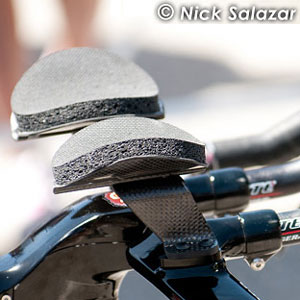
The handlebar also tilts. And, the pads can be raised above the pursuit bar incrementally, allowing the rider to choose the height the bars sit above the pursuit bar. And, if you really want to get funky, pictured is the custom mount for Levi Leipheimer, though I'm not really a fan of the position. I haven't ridden a Speed Concept, haven't gone through the process of seeing whether and how this bike would fit me (as I did with Cannondale's Slice recently). Those who've read what I've written about bikes that are built to exceed the aerodynamic norm is that I'm all for them, but, not a the expense of giving up the basic functions a bike performs. Only a closer sniff would tell me whether the Speed Concept is as easy to set up as would be a bike with a traditional stem configuration. But I can say that of all the bikes I've seen with disappearing stems, this is the most ambitious attempt at making sure adjustability is not lost, both through the unique and well-conceived set of stem configs, and the rationally-calculated 5 sizes, that increase almost exactly by 20mm of length and 25mm of height respectively, size to size.
The rest of the "below the waist" metrics of the Speed Concept also seem to make sense. The trail of each size is right at 60mm (near or at my idea of the ideal), and the front/centers range up to 650mm for the tallest size. The BB drop on every size except the smallest is 80mm. This is a lot. This is a bike you'd want to be careful with if you like to pedal around corners. Otherwise, I think there's a real question whether the claimed aerodynamics of this bike has to do with its proximity to the ground. This I'll let others decide.
When I look at this bike, I see for myself a bike that is a geometric match for me in the 60cm size, in its length. But, that bike is too tall for me. It's probably a better height fit in size-58cm. Can this bike be made to fit me, and, if so, in which size? Perhaps I'll ask the folks from Trek to match my fit coordinates in both 58cm and 60cm sizes, take a couple of pics of these bikes, and send them my way. If we can get that done, I'll post them on Slowtwitch, and we'll see what Trek configs for my fit coordinates would look like. This might give readers an idea whether they like the look of larger or smaller frame sizes matched to their fit coordinates, and what such configs would look like once built.
Related Articles
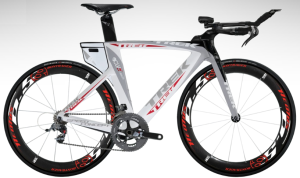
Trek's White Paper 2.0 - The Speed Concept (2010)
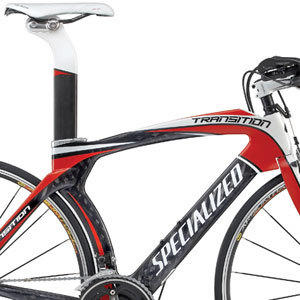
For 2010 the majors are all in
Our partners.
- Privacy Policy
- User Agreement
transition-DOT-area-AT-slowtwitch-DOT-com
©1999-2024 Slowtwitch, Inc., and Slowtwitch.com Reproduction of material from any Slowtwitch.com page without written permission is strictly prohibited.
Trek Speed Concept 7.5 Triathlon Bike: So Good Our Tester Bought It
Premium handling and compliance with triathlon-ready aerodynamics

The Left Turn comes more suddenly than you expect it to. It’s midway through a gradual descent whose first half bends lazily, like a child’s drawing of a river on a map. You’re not flying, exactly, but doing at least 25mph if you’re down in the aero bars, as I was. It feels really good, cruising down that stretch, with the arduous climbs and time-trial stretches behind you, and the finish line a few minutes away. And then, as the road’s unhurried curve veers more sharply to the left, your reverie is shattered.
It was a few years ago when I first encountered The Left Turn. I was riding a different tri bike at the time, and I tried to make the turn but quickly recognized it wasn’t going to happen. I had probably reacted a bit late and not quite aggressively enough, but that bike felt stubborn, even unwilling. It was as though I was riding an extremely expensive carbon-fiber mule. Instead of holding my line and arcing to the left with my fellow almost-finished triathletes, I leaked off the right side of the road and into some bushes. It was sheer luck that I didn’t hit a tree. I un-white-knuckled the brakes, gathered myself, dismounted, walked the bike back to the road, and set out again. But I rode the final stretch with my hands hovering over the brake levers and my tail between my legs.
That colored my perceptions of tri bikes for good. I raced on them grudgingly, but doubted their value in sprint-distance tris that weren’t as flat as Kansas. Sure, they were great for going fast in a straight line, but not much else. They were uncomfortable to ride—herky-jerky, and so stiff that you took every speedbump and crack in the road like body blows. And their fit and geometry made getting out of the saddle difficult, rendering them almost as bad at climbing as they were at cornering.
RELATED: How to Turn Your Road Bike into a Tri or Time Trial Bike
My opinion began to evolve during my first few rides on the Speed Concept 7.5. I wasn’t surprised that it was fast—but it felt especially so. Trek bills the Speed Concept line as the fastest on the planet, with aerodynamically shaped tubes that the company says reduce drag at all crosswind angles. The carbon-fiber frame is 19 pounds—respectable for a sub-$4,000 tri bike—but surprisingly responsive to even subtle cues. The fit was the most comfortable of any tri bike I’d ever ridden. Its base bar is positioned a bit closer to the rider (which I liked), but it’s easy to slide it out to fine-tune the fit. The pads and aerobars are also highly adjustable, offering a range of possible variations. The version I tested came equipped with Ultegra 6800 Series components, which offered clean, crisp shifting up and down the 11-speed drivetrain, whether I was hammering the flats or climbing and descending the Pennsylvania rollers I spend most of my time riding. My one quibble was the feel of the Bontrager brake calipers and levers, which had a little too much give and a disconcerting (to me, anyway) lack of crispness. I prefer brakes that announce themselves with military precision, especially on a bike this fast. But the Speed Concept 7.5 seemed to prefer soft diplomacy.
So my hands instinctively brushed the brake levers this past August when I once again approached The Left Turn in the final descent of that Olympic tri. Yes, this time I knew it was coming, but the Speed Concept 7.5 was so smooth and responsive that I didn’t need the brakes. The bike—which was fast enough on the rest of the course to help me shed four minutes from my prior year’s ride—simply did what I wanted it to do: corner sharply but cleanly, delivering me to an exhilarating finish.
The Speed Concept 7.5 surprised me again a few weeks later during a sprint tri featuring a four-mile-long ascent that climbs almost 1,000 feet. It wasn’t easy—I was still riding a tri bike, after all—but I downshifted all the way and cruised to the top, past other riders serpentining or walking their bikes. A few days later, the Speed Concept 7.5 earned some style points. “That is a beautiful bike,” a diehard roadie said, after seeing it on my roof rack . “Most tri bikes look kinda alien. That almost looks like a road bike.”
And so after test-riding this remarkably versatile tri bike all summer, I paid it the highest compliment of all: I bought it.

.css-1t6om3g:before{width:1.75rem;height:1.75rem;margin:0 0.625rem -0.125rem 0;content:'';display:inline-block;-webkit-background-size:1.25rem;background-size:1.25rem;background-color:#F8D811;color:#000;background-repeat:no-repeat;-webkit-background-position:center;background-position:center;}.loaded .css-1t6om3g:before{background-image:url(/_assets/design-tokens/bicycling/static/images/chevron-design-element.c42d609.svg);} Bike Reviews

The Best Beach Cruisers for Leisurely Rides

The Best Hardtail Mountain Bikes

Best Hybrid Bikes You Can Buy Right Now

The 14 Best Road Bikes of 2024

The Best Commuter Bikes for Getting Around Town
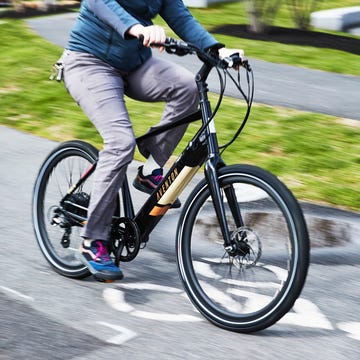
The 10 Best Electric Bikes, Tested by Our Editors
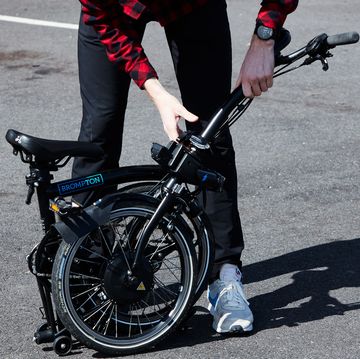
These Folding Bikes Can Go Everywhere

Smoother and Faster: The New Pivot Switchblade

The Best Beginner Mountain Bikes

Reviewed: Colnago's Italian Made C68 Gravel
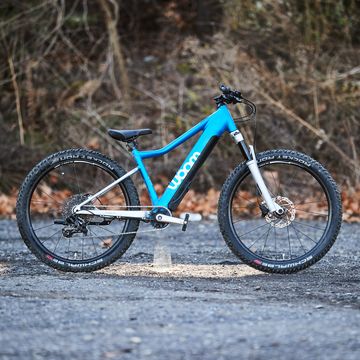
The 6 Best Kids’ Bikes in 2024
Fast. Faster. Fastest ever. Introducing the third-generation Speed Concept Speed Concept is a triathlon bike engineered to be fastest in its class. But it’s not all aerodynamics and ultra-light carbon. It’s also seamlessly designed hydration and fueling systems that boost your energy post-swim, keep you strong as you cycle, and set you up for your best run ever. We put our best into this bike, and you’ve put your all into training. This is your year—go out and earn what’s yours.
Designed to make you faster than ever Six minutes. That’s how much faster this Speed Concept is on an Ironman course than previous models. When you’re racing to place, that’s a huge advantage. But these types of gains don’t come easy—it took years to hone the bike’s design to blazing fast perfection. After thousands of iterations and a handful of trips to the wind tunnel, we found every watt and ounce possible.
- Learn how we made it aero
Fast shapes, ultralight carbon
Drag-reducing Kammtail Virtual Foil tube shapes cut through the air, and ultra-light 800 Series OCLV Carbon allows us to craft these fast aero shapes without compromising on weight.
Redesigned aero frame
From the fork to the headtube and the seat stays, Speed Concept’s frame is meticulously engineered for aero gains and is 180 grams lighter than our previous chassis.
Disc brakes without the weight
Disc brakes deliver more stopping power than rim brakes in any conditions, but they can also add weight. By optimizing the design of the fork and the wheels, we only added 170 grams. Most disc brakes designs add 450 grams of weight!
Stay fueled, stay fast Carbon fiber and aero tube shapes aren’t the only factors that’ll make you faster. That’s why we put a ton of brainpower into creating the most aerodynamic and intuitive hydration and fueling systems for Speed Concept. You won’t miss out on free speed, and you’ll stay perfectly gassed up for your ride and run.
- Learn more about fuel and storage systems
A better between-the-arms bottle
Designed to boost aerodynamics and hydration. The built-in straw makes it easy to take a sip, and when you need a refill just grab a bottle from the station and squeeze it into the bottle via the silicone port.
Fully integrated bento box
Built directly into the top tube, you can hold a race’s worth of nutrition inside. Removable dividers let you keep things organized, and a stiff silicone top with a slot makes access easy without sacrificing aerodynamics.
Aero down tube bottle
Designed for drink mix concentrate so you can calibrate your nutrition perfectly. Just squeeze a bit into the BTA’s silicone port to get the right fuel ratio.
Hidden down tube storage
Under the down tube bottle there’s concealed storage that holds an entire flat kit! A CO2 cartridge, Bontrager BITS tool, and a tube can fit inside.
A more comfortable, compliant ride Most tri bikes are… wildly uncomfortable to say the least. Not this one, as it comes with road-smoothing IsoSpeed that’s 30% more compliant than before. Because triathletes naturally sit closer to the nose of the saddle, we did a lot of testing to figure out the best place to put IsoSpeed. The result is a new, tri-specific IsoSpeed with a pivot position that’s much farther forward than other road bikes. And if you’re wondering if a more comfortable ride translates to performance improvement—yes. In real world testing done by Trek’s Performance Research Lab we’ve found that a more compliant ride is less fatiguing for your body and helps keep you fresher for the run.
Dial in the perfect fit A great bike fit is absolutely critical for triathletes—you stay planted in your aero position for mile after mile. That’s why the new Speed Concept has a huge fit window and tons of opportunity for adjustment. You can customize every bit of the bars, extensions, towers, pads and more—and we’ve made it quicker and easier to adjust, too.
- Learn more about Speed Concept fit
Travel with ease Once you’ve got your perfect fit, it’s almost devastating to have to break down your bike for travel. Fear no more—we’ve made it incredibly easy to pop off the base bars and extensions, and your fit positions will be preserved perfectly for when you re-assemble your Speed Concept at your destination.
- Learn how to travel with Speed Concept
Speed Concept takes gold time and time again
The newest gen Speed Concept has won multiple UCI time trial world championships, Ironman world championships, and more. Learn more about Speed Concept’s victories across the globe.
UCI World Hour Record
Ellen van Dijk set the fastest UCI World Hour Record on her fully-custom Speed Concept. She smashed the previous record by a full minute.
Exclusively available in Project One The all-new Speed Concept is available only through Project One, giving you the chance to create your ultimate custom tri bike. You can customize every bit of the fit, the components, and of course, the paint.
- Customize your Speed Concept
Explore the Speed Concept family
Learn more about Speed Concept
Aerodynamics
Learn how we made Speed Concept so fast.
Fit and travel
Learn how to dial in your fit and how to travel with Speed Concept.
Storage systems
Learn how Speed Concept helps you stay hydrated and fueled.

- Rider Notes
2012 Trek Speed Concept 2.5 WSD

An aluminum frame women’s triathlon bike with mid-range components and rim brakes. Compare the full range
For This Bike
View more similar bikes →
A bike with lower gearing will be easier to ride up steep hills, while a higher top end means it will pedal faster down hills.
Speed Concept 2.5 WSD
Similar Bikes
(descending)
Add custom gearing
4'11" – 5'5"
5'2" – 5'8"
5'5" – 5'11"
🐐 Estimated
Do you have this bike? Help other riders make a decision about which size will work for them by sharing your own size and fit notes. Report your fit

Jul 2013 · William Tracy
The 2014 versions can save around two minutes during the 112-mile bike leg of an Ironman race
Read Review

An aero aluminium frame with a curious component selection and a riding position that's too sat up for flat-out TT speed

Jul 2011 · Guy Kesteven
The latest aerodynamic science at an affordable price, but rider fit and responsiveness issues leave the Trek disappointing overall

Last updated June 29 Not listed for 2,495 days

COMMENTS
Hit compare to see this Trek side-by-side with your bike. Geometry Details: Trek Speed Concept 9 Series 2012 Like most sites, this site uses cookies to make it work.
Trek Speed Concept 9.9. May 2011 · Mat Brett. Super-fast aerodynamic machine - it could be the most aero bike out there; if not, it's certainly right up there - with excellent adjustability and a top spec sheet. Read Review.
Trek Speed Concept 2.5. May 2012. An aero aluminium frame with a curious component selection and a riding position that's too sat up for flat-out TT speed. Read Review. Trek Speed Concept 2.5 review. ... Bicycle Geometry Terms; Trends; Reviews; The Best Bikes. Gravel Bikes Under $2k;
View product specifications: Trek Speed Concept 7.0 2012 - View Reviews, Specifications, Prices, Comparisons and Local Bike Shops. ... Alloy dual-pivot front brake; Speed Concept integrated rear brake w/Bontrager Race Lite aero levers: Cassette: SRAM PG-1050 11-28, 10 speed: Crankset:
We ride faster and faster, so a good braking system is essential on a bike nowadays. The Speed Concept 9.9 comes with Rim brakes. Rim brakes are cheaper than hydraulic brakes, and also easier to maintain. However, they are not nearly as effective as hydraulic brakes are.
Discover the Trek Speed Concept 9 Series, a triathlon bike that combines aerodynamics, comfort and versatility. Read our review to learn more.
Weight. M - 8.13 kg / 17.92. Weight limit. This bike has a maximum total weight limit (combined weight of bicycle, rider, and cargo) of 275 pounds (125 kg). We reserve the right to make changes to the product information contained on this site at any time without notice, including with respect to equipment, specifications, models, colors ...
Speed Concept is a lot of things, but above all, it's fast. It's our most aerodynamic bike, which makes it an ideal triathlon bike and a great choice for TT enthusiasts who know every second matters. Plus, it's an exceptional value: adjustability, integration, customization options, aero wheels, and an 11-speed drivetrain—all in a super ...
Discover the features and performance of Trek's time trial and triathlon bike in our comprehensive review.
Geometrically, the Speed Concept plays it right down the middle. This bike started with stack and reach as design inputs, that is, the top tube lengths, front/center, and other metrics were largely resultant from frame length and height imperatives that Trek mandated. The attached graphic, borrowed from Trek's Speed Concept White Paper, in ...
A few days later, the Speed Concept 7.5 earned some style points. "That is a beautiful bike," a diehard roadie said, after seeing it on my roof rack . "Most tri bikes look kinda alien.
Speed Concept is a triathlon bike engineered to be fastest in its class. But it's not all aerodynamics and ultra-light carbon. It's also seamlessly designed hydration and fueling systems that boost your energy post-swim, keep you strong as you cycle, and set you up for your best run ever. We put our best into this bike, and you've put ...
Frame. 500 Series OCLV Carbon, KVF (Kammtail Virtual Foil) tube design, DuoTrap & SC Draft Box/SC Speed Box compatible. Fork. Bontrager Race Lite E2 Tri Speed Concept, carbon. Headset. Integrated, sealed bearings, 1" top, 1-1/8" bottom. Stem. Bontrager Race Lite, 7 degree, 31.8mm. Handlebar.
Drive • 1h 48m. Drive from Voskresensk to Moscow Sheremetyevo Airport (SVO) 127.3 km. RUB 900 - RUB 1400. Quickest way to get there Cheapest option Distance between.
500 Series OCLV Carbon, KVF (Kammtail Virtual Foil) tube design, DuoTrap & SC Draft Box/SC Speed Box compatible. Fork: Bontrager Race Lite E2 Tri Speed Concept, carbon. Headset: Integrated, sealed bearings, 1" top, 1-1/8" bottom. Stem: Bontrager Race X Lite, 7 degree, 31.8mm. Handlebar: Bontrager Race X Lite Bullhorn, carbon w/Race Lite clip ...
Voskresensky District is an administrative and municipal district (raion), one of the thirty-six in Moscow Oblast, Russia. It is located in the east of the oblast. The area of the district is 812.480 square kilometers (313.700 sq mi). Its administrative center is the town of Voskresensk. Population: 153,600 ; 152,761 (2002 Census); 77,573 (1989 Census).
Voskresensk is a town and the administrative center of Voskresensky District in Moscow Oblast, Russia, located upon the banks of the Moskva River 88 kilometers (55 mi) southeast of Moscow. Population: 95,495 (2021 Census); 91,464 (2010 Census); 77,871 (2002 Census); 80,393 (1989 Census).
Voskresensk is a town and the administrative center of Voskresensky District in Moscow Oblast, Russia, located upon the banks of the Moskva River 88 kilometers southeast of Moscow. Population: 95,495 ; 91,464 ; 77,871 ; 80,393 . Photo: Wikimedia, CC BY 3.0. Photo: Irina Grigoryeva, CC BY-SA 4.0.
Tested: Trek Speed Concept 7.5 Triathlon Bike. Oct 2015 · David Willey. Premium handling and compliance with triathlon-ready aerodynamics. Read Review. Geometry. Specs. Build. Frame: 500 Series OCLV Carbon, KVF (Kammtail Virtual Foil) tube shape, BB90, Speed Fin compatible, DuoTrap compatible, SC Draft Box 2 & SC Speed Box compatible ...
Frame. 200 Series Alpha Aluminum, KVF (Kammtail Virtual Foil) tube design, SC Speed Box & Bento Box compatible. Fork. Bontrager Race Lite E2 Tri Speed Concept, carbon, SpeedTrap compatible. Headset. Integrated, sealed bearings, 1" top, 1-1/8" bottom. Stem. Bontrager Race Lite, 7 degree, 31.8mm. Handlebar.